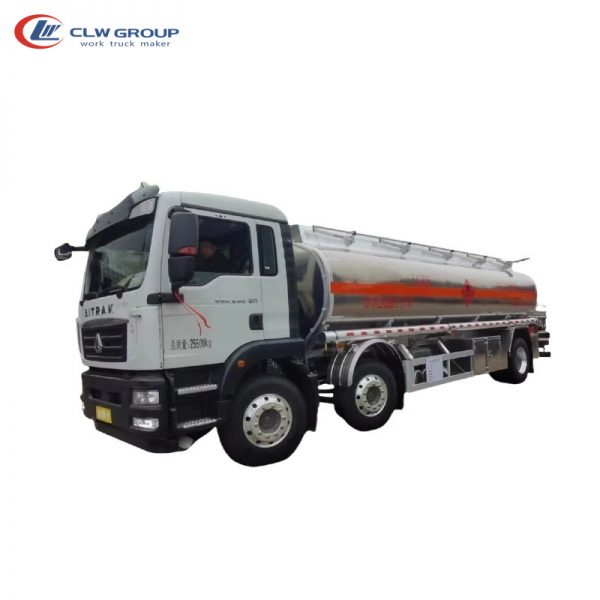Fuel Truck Inspection Checklist Ensuring Safety and Efficiency on the Road

Introduction:
The transportation of fuel is a critical task that requires utmost attention to safety and efficiency. Fuel trucks play a vital role in delivering gasoline, diesel, and other petroleum products to various locations, including gas stations, airports, and industrial facilities. To ensure the safe operation of these vehicles, regular inspections are necessary to identify and address any potential hazards or mechanical issues that may compromise both the driver's safety and the integrity of the transported fuel. This article will provide a comprehensive fuel truck inspection checklist, highlighting the key areas that need to be assessed to maintain safety and efficiency on the road.
1. Exterior Inspection:
1.1 Overall Vehicle Condition:
- Check for any signs of damage, such as dents, scratches, or cracks on the fuel truck's body and chassis.
- Inspect the condition of tires, including tread depth, pressure, and any visible signs of wear or damage.
- Ensure that all lights, including headlights, taillights, brake lights, and turn signals, are functioning properly.
- Verify the condition of external mirrors, windshield wipers, and other essential components.
1.2 Fuel Tank Inspection:
- Examine the fuel tank for signs of leaks, corrosion, or any visible damage.
- Ensure that the tank is securely fastened and free from any loose fittings.
- Check the fuel tank's capacity and ensure it aligns with the truck's specifications.
- Verify the presence and condition of fuel tank vents and any associated safety devices.
1.3 Safety Equipment:
- Inspect the condition and accessibility of fire extinguishers, emergency spill kits, and other safety equipment.
- Ensure that reflective safety cones, warning signs, and flags are available and in good condition.
- Check the functionality of emergency shut-off switches and other emergency devices.
2. Interior Inspection:
2.1 Cabin and Controls:

- Assess the overall cleanliness and organization of the driver's cabin.
- Verify the functionality of all controls, including steering, brakes, accelerator, clutch, and transmission.
- Test the operation of all gauges, meters, and indicators, including fuel level, oil pressure, temperature, and battery voltage.
- Ensure that the cabin's ventilation and heating systems are operating correctly.
2.2 Safety and Communication Equipment:
- Inspect the condition and availability of safety belts and their anchorage points.
- Verify the functionality of the horn, windshield wipers, defrosting systems, and other essential safety features.
- Check the condition and operation of the communication devices, such as the radio or mobile phone, for emergency purposes.
3. Mechanical Inspection:
3.1 Engine and Transmission:
- Check the engine oil level and condition, ensuring that it meets the recommended specifications.
- Inspect the radiator coolant level and condition to prevent overheating.
- Verify the condition and tension of drive belts.
- Assess the transmission fluid level and ensure it aligns with the manufacturer's recommendations.
3.2 Braking System:
- Inspect the condition of brake pads, rotors, and drums.
- Verify the functionality of the parking brake and emergency brake systems.
- Ensure that the brake lines and hoses are free from leaks, cracks, or other visible damage.
- Test the efficiency of the air brake system, if applicable.
3.3 Suspension and Steering:
- Check the condition of the suspension components, including springs, shock absorbers, and bushings.
- Inspect the steering system for any signs of wear or looseness.
- Verify the proper alignment of the wheels and tire balance.
4. Fueling Equipment:
4.1 Fuel Pump and Meter:
- Inspect the condition and operation of the fuel pump, including hoses, nozzles, and filters.
- Verify Fuel truck grounding requirements of the fuel meter and ensure it is properly calibrated.
- Check for any signs of leaks or damage in the fueling equipment.
4.2 Overfill Prevention:
- Ensure the presence and functionality of overfill prevention devices, such as high-level alarms or automatic shut-off systems.
- Inspect the condition of spill containment systems, such as drip pans or spill buckets.
Conclusion:
Regular inspections of fuel trucks are crucial to maintaining safety and efficiency in the transportation of fuel. By following a comprehensive fuel truck inspection checklist, fleet operators and drivers can identify and address potential hazards or mechanical issues promptly, ensuring the integrity of the fuel transported and the safety of all involved parties. Implementing a robust inspection program not only minimizes the risk of accidents or spills but also extends the lifespan of the vehicles, reducing maintenance costs and downtime. By prioritizing safety through regular inspections, the fuel transportation industry can continue to operate smoothly and effectively.
